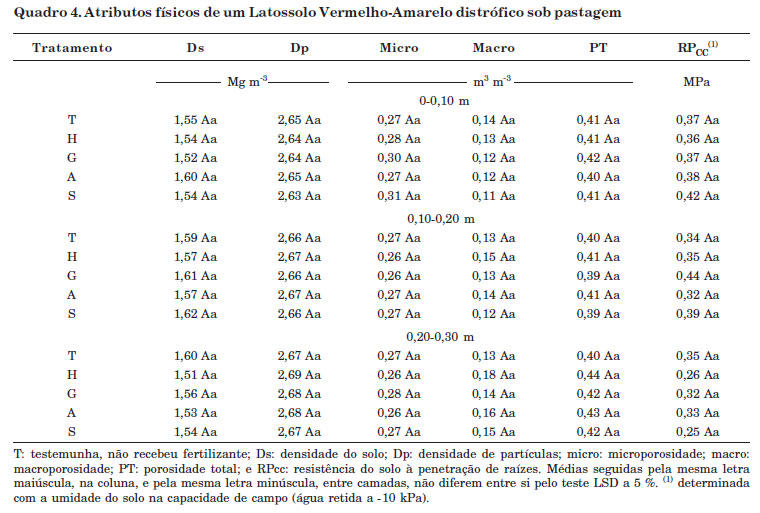In the Amazon region, pastures provide a satisfactory grass yield in the first years. Over time, overgrazing by livestock, the lack of pasture maintenance and choice of regionally unsuitable forage species can lead to soil degradation. The objective of this study was to evaluate the effect of different soil management systems on some soil physical properties of a Red-Yellow Oxisol (LVA) under degraded pasture, in the State of Rondônia (RO). The soil management systems were T = control; G = harrowing + NPK + micronutrients; H = herbicide + NK + micronutrients; A = no-tillage rice + NPK + micronutrients; S = no-tillage soybean + NPK + micronutrients. The experiment was arranged in a randomized block design with four replications and five soil management systems. Undisturbed soil samples were collected (layers 0-0.10, 0.10-0.20 and 0.20-0.30 m) to assess soil water retention capacity, soil bulk density, soil penetration resistance, macroporosity, microporosity and total porosity, and to calculate the least limiting water range (LLWR), maximum soil bulk density (Dsmax), and relative soil bulk density (Dsrel). The management systems did not improve the soil physical properties, 40 months after the beginning of experiment. In all treatments, soil bulk density was higher than the ideal value (1.40 Mg m-3) and lower than critical (1.70 Mg m-3). With exception of G (0-0.10 m), the Dsrel exceeded the critical level (Dsrel = 86 %) in all soil management systems. The evaluation of the LLWR showed that the physical quality decreased with increasing soil depth.
Oxisol; soil physical properties; least limiting water range; compaction degree





